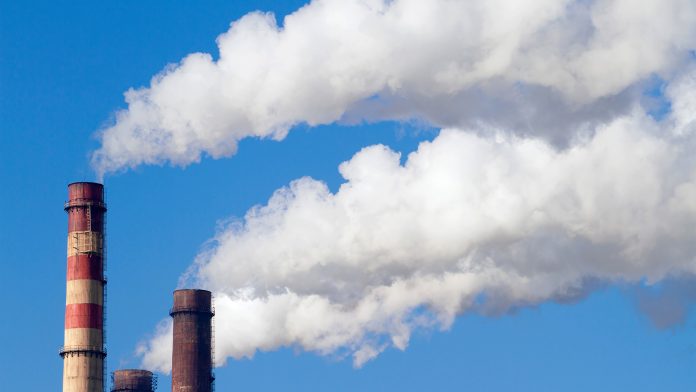Research led by the Virginia Institute of Marine Science has revealed that jelly plankton blooms can offset as much carbon dioxide as emitted by millions of cars.
Despite the urgent need to reduce the amount of greenhouse gases in Earth’s atmosphere, humans are continuing to emit carbon emissions, exacerbating the effects of global warming. A study has found that these carbon emissions can be offset by a distant human relative which pumps large amounts of carbon from the ocean surface to the deep sea.
Led by Dr Deborah Steinberg of William & Mary’s Virginia Institute of Marine Science, the study, titled ‘The outsized role of salps in carbon export in the subarctic Northeast Pacific Ocean,’ reports on research conducted as part of EXPORTS (EXport Processes in the Ocean from RemoTe Sensing), a four-year, multi-institutional field programme funded by NASA.
EXPORTS aims to combine shipboard and satellite observations to more accurately quantify the global impact of the ‘biological pump.’ This is a number of biological processes that move carbon from sunlit surface waters to the deep sea, subsequently removing carbon dioxide from the surface ocean and atmosphere. Zooplankton play a key role in the pump by eating phytoplankton that incorporate carbon from carbon dioxide into their tissues during photosynthesis and then export that carbon to depth.
Discovering salps’ ability to offset carbon emissions
During a 2018 EXPORTS expedition to the northeast Pacific Ocean, the team discovered a large bloom of gelatinous zooplankton named Salpa aspera. Like other salps, they begin life with a notochord – which develops into the spinal cord in humans – and as adults, they drift through oceans like small transparent whales that filter microscopic plants in the water.

The team was interested in salps because they are able to reproduce asexually, being able to clone into immense blooms under the right conditions. The S. aspera is also bigger than most other zooplankton and can filter more water, producing larger and heavier faecal pellets. Thirdly, it migrates through the water each day, rising to feed on phytoplankton during the night, and sinking deeply during sunlit hours to avoid predators.
These features led the researchers to believe that salps could play an important role in curbing carbon emissions, as carbon could be transported to depth through their heavy, fast-sinking faecal pellets, which are given a start on their journey due to the vertical migration patterns.
Challenges to studying the role of salps in the biological pump
However, the ephemeral life cycle and uneven distribution of salps have long created a barrier to studying their role in offsetting carbon emissions.
“Salps follow a ‘bloom or bust’ life cycle,” said Steinberg, “with populations that are inherently patchy in space and time. That makes it hard to observe or model their contribution to the export of carbon to the deep sea.”
The team overcame the challenges by deploying a wide range of ocean-observation tools
During the 2018 expedition, the team deployed a wide range of ocean-observation tools, such as traditional plankton nets, sediment traps, and underwater video recorders. To further study salps’ role in offsetting carbon emissions, the team used two research vessels, the 277-ft Roger Revelle and the 238-ft Sally Ride, to observe conditions inside the salp bloom and surrounding waters. This provided a broader geographic context for their study.
The results gathered by the team were clear. “High salp abundances, combined with unique features of their ecology and physiology, lead to an outsized role in the biological pump,” said Steinberg.
The salp bloom observed by the team covered more than 4,000 square miles. With the experiments revealing that salps can export nine milligrams of carbon through each square metre at 100 metres below the bloom, the amount of carbon exported to the deep sea was around 100 metric tons per day. Comparatively, carbon emissions from a typical passenger car are around 4.6 metric tons per year.
By looking at these values, it is evident that the carbon emissions removed each day of the bloom is equivalent to taking 7,500 cars off the road. Adjusting these values using the team’s highest measured rate of salp-mediated export increases the carbon offset to more than 28,000 vehicles.
The team is calling for increased recognition of the key role that salps play in global carbon export
“Blooms like the one we observed often go undetected,” said Steinberg, “and their contributions to the biological pump are rarely quantified, even in some of the best-studied regions of the world’s oceans.”
By incorporating salp dynamics into a recent carbon-cycle model, their potential to curb carbon emissions is highlighted. In this global model, salps and other tunicates exported 700 million metric tonnes of carbon to the deep sea each year, equal to emissions from more than 150 million cars.
“Greater use of new technologies, such as adding video imaging systems to autonomous floats, would help detect these salp blooms,” said Steinberg. “Our study serves as a ‘call to arms’ to better detect and quantify these processes, using technology and sampling schemes that enable their inclusion in measurements and models of the biological carbon pump.”









